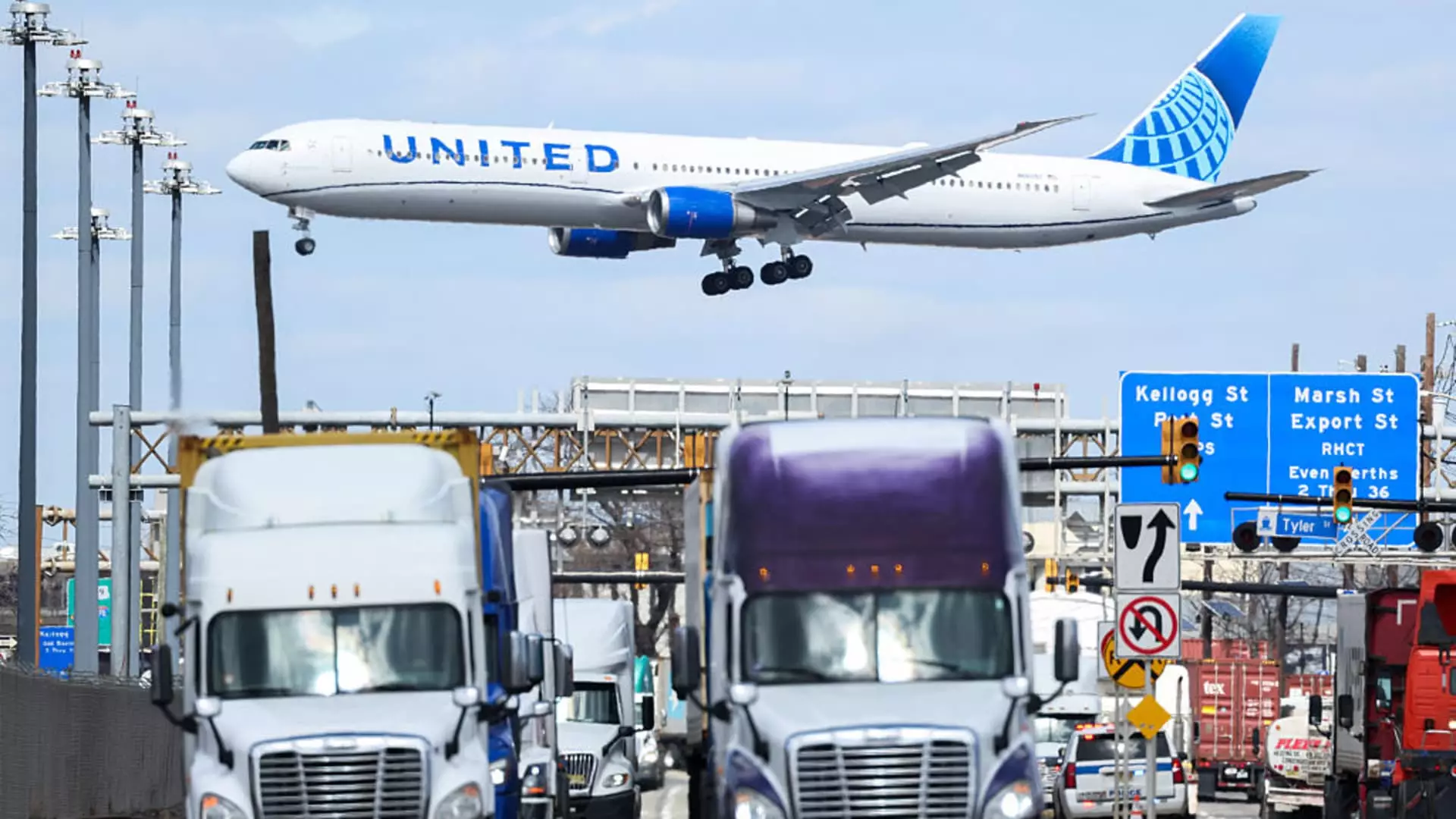United Airlines announced its commitment to maintaining full-year projections, but the message hid a deeper unease about the future of air travel in an erratic economy. The airline, once a beacon of profitability, now confronts the impending specter of a recession and openly admits that the unpredictable macroeconomic environment complicates even the most basic forecasting. This isn’t just corporate jargon; it’s a clear acknowledgment that the industry is in uncharted territory. United’s willingness to share a potential (and much less optimistic) forecast amidst this uncertainty should send shivers down the spines of investors, employees, and travelers alike. The reality is stark: the very foundation on which this airline was built seems shaky.
Flight Cuts and Domestic Demand Dilemma
One of the most concerning announcements from United Airlines is its decision to reduce domestic flights by approximately 4% starting this summer. This decision reflects a troubling trend: while the demand for international travel remains robust, domestic travel’s sluggishness raises serious questions about the health of the average American consumer’s finances. The fact that United needs to cap domestic capacity in the face of a boom in premium international travel signals a rift that could widen dramatically. Is this the moment when we recognize that the economy’s pulse is fading? Or is it merely a sign that Americans are prioritizing luxury and escapism over day-to-day travels amid rising inflation and economic pressure?
Profitability in a Pinch: A Fragile Reality
United’s recent earnings report painted a picture of resilience, showcasing a profit surge to $387 million from a previous loss. However, the figures flash warning signs when we dive deeper. The airline’s strong adjusted earnings of 91 cents per share, exceeding expectations, may be reflective of temporary market conditions rather than sustained growth. High revenues from premium bookings should keep shareholders satisfied for now, but the looming threat of decreasing domestic sales could hamper long-term stability. What does this mean for the average consumer? Are we witnessing a widening wealth gap in air travel, where only those with deep pockets can afford to soar through the skies?
Market Trends and Uncertain Solutions
In the face of deteriorating domestic travel demand, United Airlines is not alone; it’s echoed in the struggles of its competitors, such as Delta Air Lines, which is also scaling back its growth ambitions. United’s CEO Scott Kirby confidently stated that the airline’s multi-year strategy equips it to thrive against any market condition. Yet, how reliable is such confidence when the industry as a whole is grappling with a decline in domestic traffic? Observing this trend leads to an uncomfortable question: Can airlines continue to report profits as they focus solely on high-end business travelers while forsaking the average family jetting off to visit relatives?
External Factors Looming Large
United Airlines grapples not only with market dynamics but also external pressures such as geopolitical tensions, shifts in consumer behavior due to economic conditions, and even remnants of trade wars. The effects of Donald Trump’s trade policies, for example, ripple through various industries, affecting both consumer sentiment and airline costs. The uncertainty sparked by these outside factors makes it clear that United’s optimism about international travel may be overshadowed by a storm that could sweep through the lower-income brackets like a freight train, drastically reducing air travel opportunities for the masses.
Able to Adapt: For Better or Worse?
The premise that United Airlines can expand its margins during tough times may prove flawed if the core of its customer base shrinks out of necessity. The shift toward premium options may seem smart in the short term but could alienate a broader market segment. The disparity between cost-efficient domestic routes and luxurious international flights might become a bone of contention for broader equality within the airline sector. Businesses often rue the day they neglect the mainstream customer base for the wealthy few. As compelling as United Airlines’ financial optimism is, it may soon face backlash reminiscent of 2008, when consumer fatigue and economic distress redefined the travel market.
These realities signal a daunting period ahead for United Airlines, and potentially, for the entire aviation industry. The apparent dichotomy in customer demand could morph from a short-lived trend to a long-lasting challenge, and the ability of United and its peers to navigate this saga will demand an unwavering commitment to adaptability and foresight.

